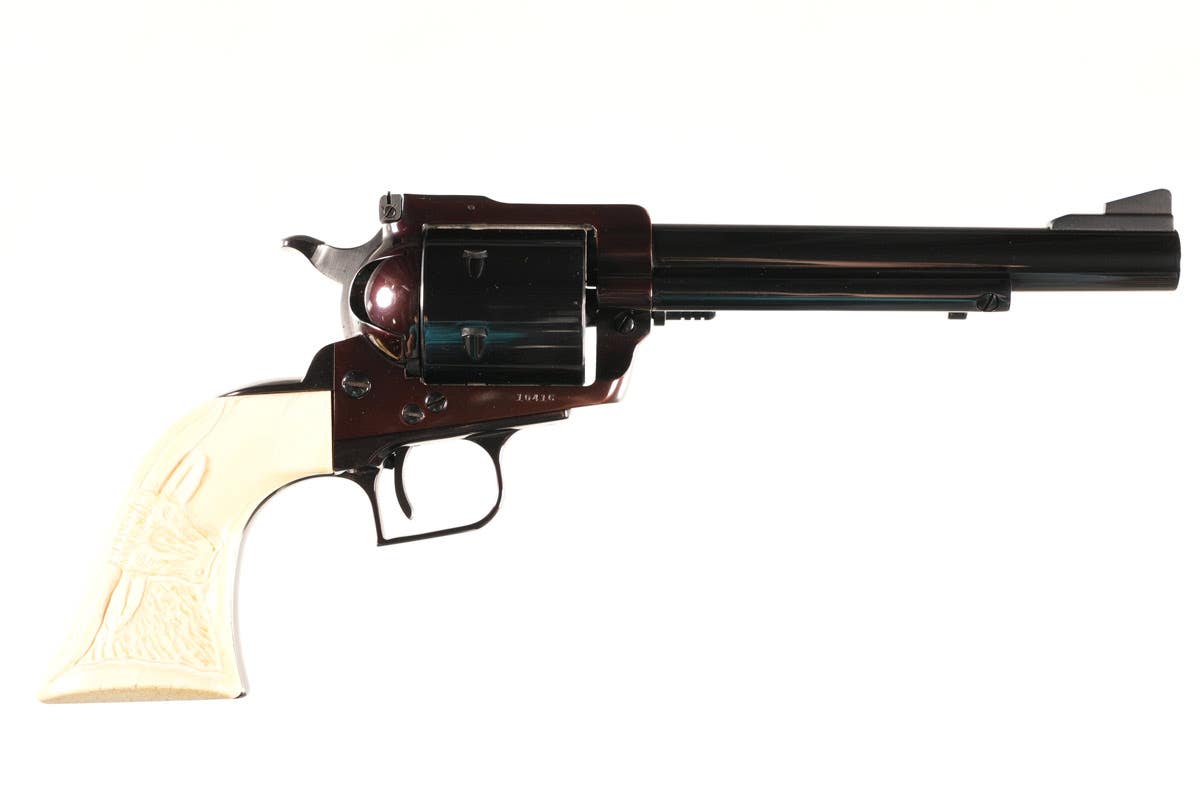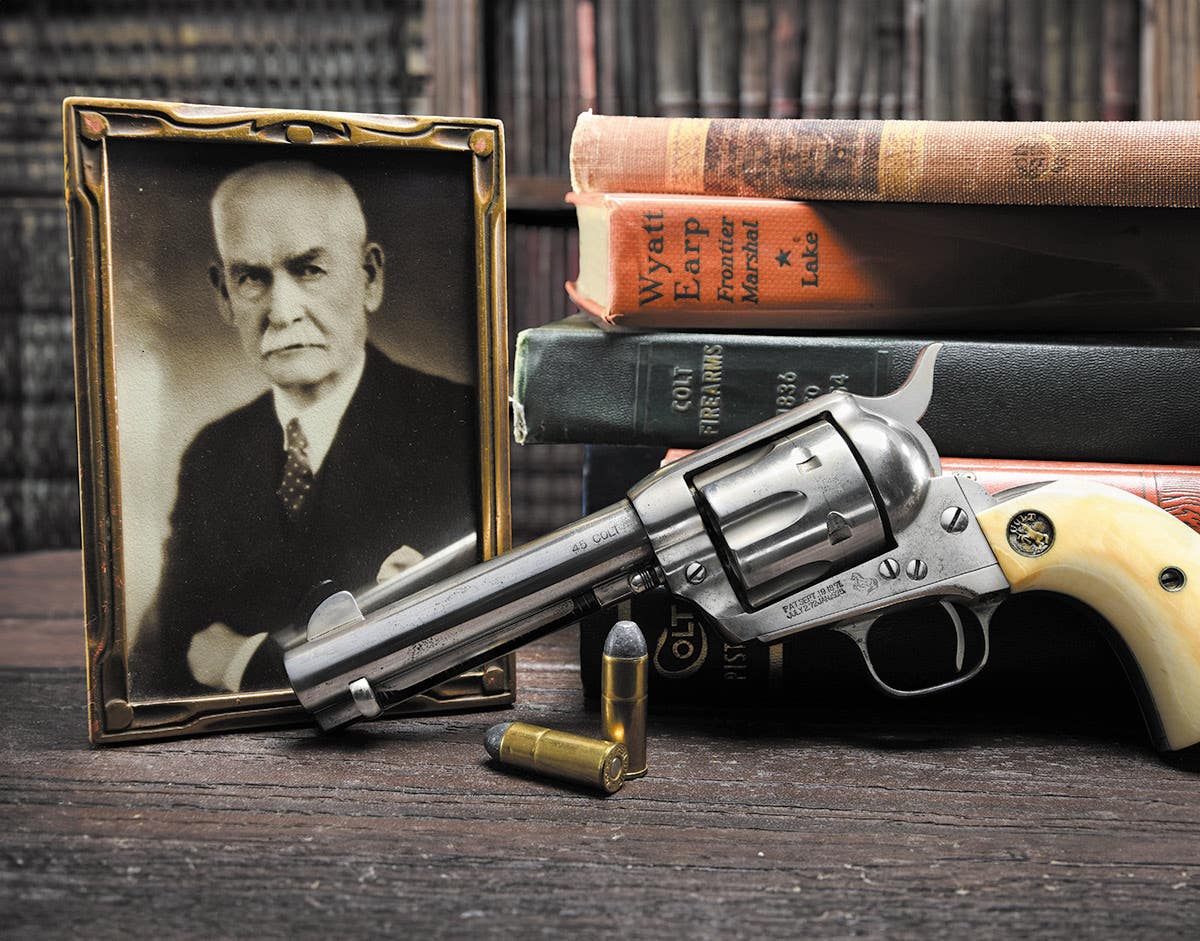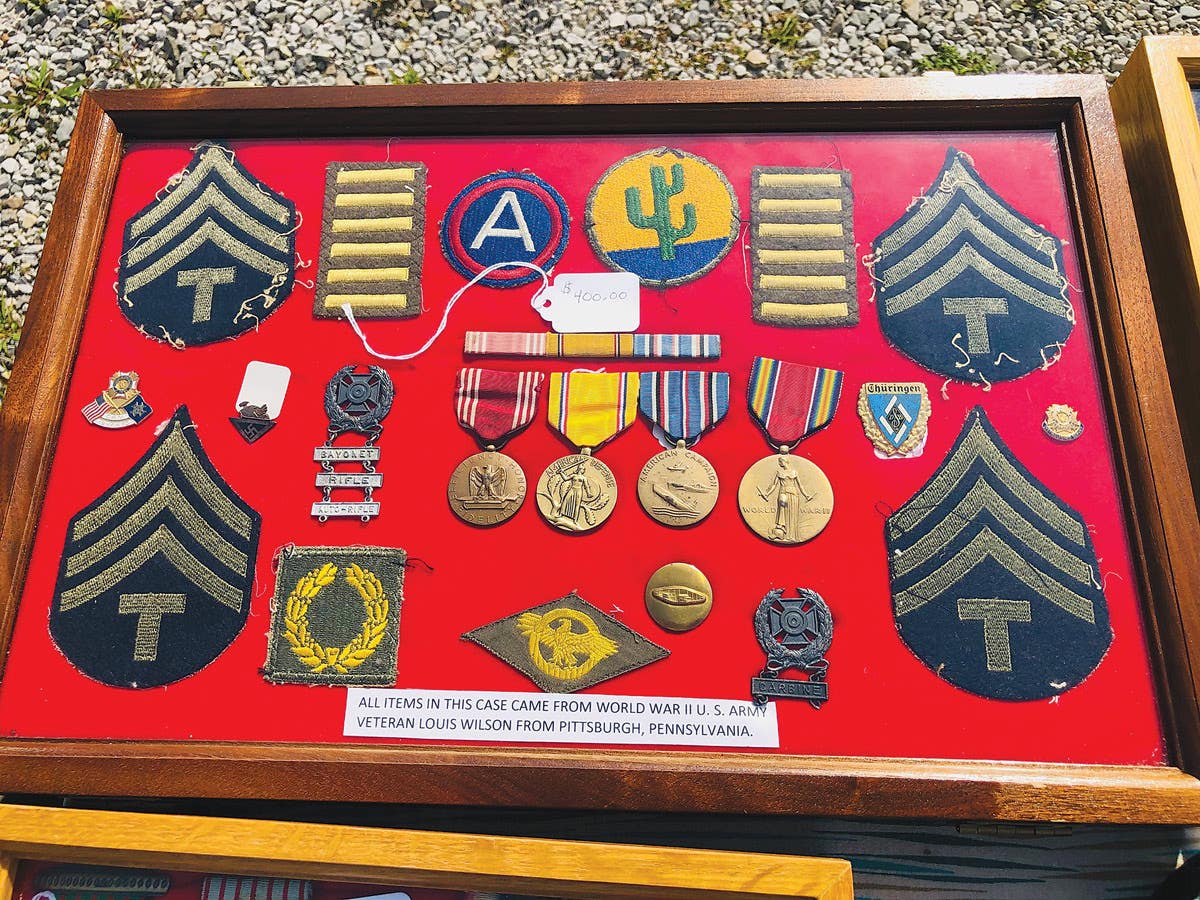Hermann Historica’s Autumn Auction Preview
This year’s Autumn Auction at Hermann Historica oHG in Munich will open on Oct.27 with the usual wide range of high quality precious objects from all eras and originating from…
This year's Autumn Auction at Hermann Historica oHG in Munich will open on Oct.27 with the usual wide range of high quality precious objects from all eras and originating from all over the world. Nov. 7, approximately 7300 collector's pieces, some of them unique, from all specialist areas represented by the auction house will come under the hammer – antiquities, arms and armour, works of art, hunting antiques, orders and collectibles from all fields of history and military history.
Military history and historical objects
Significant collectors' items from the courts of Europe's ruling houses are offered for auction once again. Among them is the personal jewelry box of Empress Elisabeth of Austria (1837 - 1898): a diamond-studded coral bracelet. Nine rows of knotted decorative corals are held together with an openworked clasp in red gold, which is decorated with large and small diamond roses. The corresponding letter of congratulations, dated 1913, attests to the fact that the bracelet, which may be acquired for 25,000 euros, was presented to Princess Alfons (Louise) of Bavaria (1869 - 1952), on the birth of her daughter Elisabeth, by the Empress's youngest daughter,
Archduchess Marie Valerie (1868 - 1924). The recipient was already familiar with the bracelet, as she had always much admired it on previous occasions when worn by the Empress, after whom her daughter was named. Originating from the same ruling house – a gift from Archduchess Marie Valerie of Austria to her niece, Princess Elisabeth of Bavaria – are handwritten envelopes from Empress Elisabeth addressed to the Kaiser during the 1860s and 70s. On offer for 1,000 euros. The original signature of her husband, Kaiser Franz Joseph I (1830 - 1916), in Hungarian, which is particularly uncommon, graces the patent of nobility issued to the renowned Hungarian journalist, Moriz Gans von Lúdassy (1825 - 1885). In beautiful condition, the colors still vibrant, the parchment and matching casket are to come under the hammer for 2,500 euros.
Also of note is a larger-than-life bust of the 16th president of the United States, Abraham Lincoln. Professor Joseph Kapfenberger (1882 - 1974), a sculptor of German descent, completed the work in 1939, only a few years after emigrating to New York. Lincoln is portrayed with dignified grandeur, his eyes closed, in meditation or at prayer. A quotation from his speech on the occasion of his second inauguration, "with malice towards none, with charity for all" and the artist's signature are engraved on the base of the bronze bust, which has a limit of 12,000 euros.
The rare helmets of German provenance will be on offer, including some exceptional pieces like a helmet M 1852 for enlisted men and non-commissioned officers of the Royal Bavarian Hartschiere Life Guards, starting at 9,000 euros. The imposing helmet – the large parade issue – has a nickel-silver skull crowned with a statant lion and bearing the Bavarian coat of arms surmounted by a crown. Equally rare, a complete full-dress uniform of the same Guards is also being offered for sale at 4,500 euros. A helmet M 1843 for officers of the Regiments Garde du Corps and Guard Cuirassiers is expected to fetch the same price. Featuring nickel-silver trims and a silver star with enamel painting, the tombac skull is topped with a silver-plated parade eagle; the marks of a sword strike are still clearly visible.
Selected French edged weapons in the military history section include a sabre for an officer of the chasseurs à cheval circa 1810 with a fascinating history, estimated at 5,000 euros. The obverse of the blade bears an etching of a hussar with drawn sword on a rearing horse, set between the inscriptions "Ve Les Chasseurs" above and "G. Nihon et Compagnie a Magdeburg" below; the reverse has identical motifs and inscriptions, except that a banner marked "Napoleon" flies above the hussar. After a siege lasting three weeks, Magdeburg fell to the French in 1806 and only returned to Prussia in 1815 following Napoleon's defeat.
The auction also comprises a number of exceptionally rare edged weapons from Russia, for example a sabre M 1827 for officers of the Russian cavalry, etched on both sides, which was forged in the prestigious bladesmith workshops of Zlatoust. Listed at 4,000 euros, the blade bears the Cyrillic inscription "For Turkmenchay, 10 February 1828" on the obverse and a representation of the Treaty of Peace between Russia and Persia on the reverse. Equally rare and with a reserve of 3,500 euros is a dagger for officers, the blade adorned with the etched tsarist cipher "NII" and the Russian double-headed eagle, with an enameled Order of St. George on the pommel.
Among the silverware on offer are two unparalleled silver tankards, crafted with outstanding workmanship and of formidable provenance. While the presentation tankard with its gilt interior, a gift from the Grand Duchess Elena Pavlovna Romanova and bearing her engraved dedication flanked by nielloed views of the Kremlin on the front, is to come under the hammer for 15,000 euros, bids are invited from 28,000 euros for the tankard shaped like a wooden barrel, which was presented to the Royal Prussian Oldenburg Infantry Regiment no. 91 by its brothers-in-arms of the Russian Imperial 67th Tarutinsky Infantry Regiment on the occasion of its centenary.
Orders and Insignia
Stealing the show in the orders section are a number of outstanding decorations from Russia, among them the red enamelled, gold Cross 1st Class with Swords of the Order of St. Anna, valued at 18,000 euros, and a set of the 1st Class of the Order of St. Stanislaus from the workshop of the renowned St Petersburg jeweller, Wilhelm Keibel, dated 1857, which is offered for sale from 11,000 euros.
A Breast Star to the Order of the Black Eagle, 1842, the personal decoration belonging to Prince Albert of Saxe-Coburg and Gotha (1819 - 1861), the husband of Queen Victoria of Great Britain (1819 - 1901), heads the parade of exceptional lots. On Jan. 30, 1842, Prince Albert was admitted to the former knightly order by King Friedrich Wilhelm IV of Prussia and awarded Prussia's highest decoration. The eight-rayed, faceted silver star bears the eagle surrounded by the order motto "SUUM CUIQUE" - To each his own - and the double laurel branch engraved in gold on white enamel. Manufactured by the orders jewellers Rundell, Bridge & Rundell of London, who were in business only until 1842, and engraved with his personal insignia, is open to bids from 10,000 euros.
Likewise, worthy of note are the crosses of the highest Prussian order for military achievements, the Pour le Mérite, which are to come under the hammer. The order cross of the legendary decoration for bravery, this version produced by Baudesson, was awarded to Second Lieutenant Karl Wilhelm Friedrich von Schmitterlöw in 1793 for his services in the War of the First Coalition against France. With an asking price of 24,000 euros, this order cross is currently the third documented award from the 18th century in the world of phaleristics. Also offered is a cross with oak leaves in the typical production method of 1870/71, which is unlikely to be available again in this condition. The Pour le Mérite order is known to have been awarded only 38 times for outstanding achievements in the Franco-Prussian War of 1870/71. The new owner will have to part with a minimum of 28,000 euros for this absolute rarity, a hollow-cast order cross, wrought in gold.
Fine antique and modern firearms
The exclusive selection of antique firearms includes a Teschen wheellock rifle (tschinke), circa 1650, which is estimated at 12,000 euros; the ornate walnut full stock is embellished with engraved and blackened stag horn and mother-of-pearl inlays. By contrast, bids are invited from 14,500 euros for the early 18th century, deluxe German wheellock rifle, lavishly decorated with bone inlays and the chiselled brass furniture with figurative engravings.
The pistol cases in the Autumn Auction boast a sensational rarity and quality that are otherwise difficult to obtain on the market. Among the marqee items are a deluxe pair of cased target pistols, manufactured by the court gun maker, Carl Daniel Tanner of Hanover, circa 1840/50. The profuse inlays intricately engraved with gold-inlaid decorative tendrils on the locks and furniture accentuate the significance of this superb example of the gun maker's craft, valued at 21,000 euros. Moreover, bidding starts at 17,000 euros for a pair of deluxe flintlock pistols, the work of Leopold Becher of Karlovy Vary, circa 1730. Specialising in the manufacture of deluxe weapons for the European royal houses, he quickly achieved widespread acclaim. No less renowned is Henry Le Page of Paris, from whose skilful hands a cased pair of percussion pistols dated 1830, complete with extensive accessories, is now available for 12,000 euros.
Rare examples of modern arms are also up for auction,with an extremely unusual Luftwaffe pistol 08 Kü, Mauser, code "41 - byf" with two matching-numbered magazines and a hardshell among them. In almost mint condition, the Parabellum pistol in 9mm calibre has a limit of 7,000 euros. Also for sale, with the same starting price, is a tank rifle M 1918, Mauser in 13 calibre x 92 HR with a fork support and various imperial acceptance marks – an outstanding weapon and likewise in mint condition. Bids are invited from 6,500 euros for an original Fallschirmjägergewehr (paratrooper rifle) 42, 1st model (DEKO) with replaced parts. The certified conversion of the restored excavation find means that all parts are moveable; including the flash hider, the rifle measures 93 centimeters.
Antiquities
Once again, the antiquities section presents several veritable rarities among the early bronze helmets, like the archaic masterpiece in excellent condition, a bronze crest helmet from the Urnfield Period, forged with blacksmith's workmanship in the twelfth to eleventh century B.C. Cut out and assembled from two separately forged sheets, then hammered into the desired shape and crowned with the characteristic broad comb of this type of helmet, the skull is closed on one side with turned edges. The price reflects the rarity and condition of this Late Bronze Age helmet, which is open to bids from 28,000 euros. Another highlight is a Chalcidian bronze helmet dating from the fourth century B.C. with its high skull, cheek pieces, short nasal bar and the typical repoussé borders around the edges of the eye openings, which is estimated at 18,000 euros. Only slightly older and with its notable, documented provenance in the famous Axel Guttmann Collection is a pseudo-Corinthian bronze helmet, forged in Apulia during the fifth to fourth century B.C., which is offered for auction from 14,000 euros. The helmet is completely conjoined, boasting fully sculptured forehead and eyebrow décor, as well as a continuous, fine herringbone border.
Of the same provenance and also embellished with a herringbone pattern on the grip and kidney-shaped pommel, an exceedingly rare, Nordic Bronze Age sword from the ninth century B.C. is valued at 8,000 euros. Next up, no less appealing and dating from the same era, is a magnificent example of an almost perfectly preserved, Bronze Age solid-hilted sword of Mörigen type with a minimum bid of 10,000 euros.
Bids are invited from 35,000 euros for one of the highlights of the antiquities catalogue: a completely preserved, Roman gravestone in marble with a detailed depiction of a man-at-arms, dating from the third century A.D. His dress, hair and style suggest that the monument originates from the provinces of the Mediterranean region of Asia Minor, while the epitaph, inscribed in Greek, hints at the identity of the deceased and his benefactor. Although, at first glance, the relief includes a number of military elements in the man's attire and weaponry, other sumptuous and exalted features indicate nevertheless that he is obviously not a soldier. It is reasonable, then, to presume that this is the gravestone of a "venator", a professional hunter who took part in spectacles in the arena involving animal fights. Highly revered and yet ostracised, the deceased was probably given an air of military honour to enhance his prestige for posterity.
Works of art
Once again, among the works of art in the Autumn Auction are a number of wrought Wunderkammer objects, including a signed, lavishly gilded and engraved miniature casket, which was made circa 1600 by Michel Mann of Nuremberg. In immaculate condition, the imposing casket features a depiction of Jesus and Mary on the lid, and portraits of the apostles on the body. Measuring a mere 4.5 x 7.2 x 5 cm, boasting the highest quality and made with outstanding craftsmanship, this dainty bijou is to come under the hammer for 7,500 euros. Dating from the first half of the 14th century and with a starting price of 4,500 euros is a double receptacle in silver, consisting of two perfectly interlocking drinking bowls that form a lidded cup when fitted together. Adorned with a beaded frieze and engraved plaques, similar examples of this very early Gothic double cup, also known as a Doppelscheuer, can be found in the Metropolitan Museum of Art in New York, for example. A wide selection of war chests, their listed prices between 1,400 and 2,800 euros, and fine carvings, like the figure of a Roman warrior in ivory and wood from the ambit of Simon Troger (1693 - 1768), the house and court sculptor of the Prince-Electors of Bavaria, offered for sale from 4,500 euros, complete the range in this section.
Arms and Armour
Once again, this autumn promises a variety of mediaeval edged weapons. The highly successful auction sales of various swords from the Battle of Castillon (1453) have attracted a great deal of attention over the past few years. In total, a group of 80 medieval swords have been documented at the site of Lidoire, in the vicinity of the battlefield at Castillon-la-Bataille. In the estimation of our in-house experts, the edged weapon now on offer is one of the most superb of the entire group of swords. The impressive Gothic sword has a very wide, robust, double-edged thrusting blade of flattened diamond section, tapering evenly toward the point. The wide tang still bears remnants of a wooden grip and the iron disc pommel is decorated with engraved ornamental lines and medallions. Of momentous historical significance, this unrivalled weapon is now destined to take pride of place in a new collection for 35,000 euros. Next in line and no less an absolute rarity is a "five-lobed sword", a hand-and-a-half sword; this example was forged circa 1550/60 in Switzerland. With all parts original, the hallmarked edged weapon is particularly impressive by virtue of its extremely long, double-edged blade, iron swept hilt and the chiselled pommel with six spiral flutes. This imposing piece is expected to fetch a minimum of 15,000 euros. By contrast, a splendid French hunting sword from the late 16th century, profusely adorned with hunting motifs, is open to bids from 20,000 euros. Stamped with a Brescian bladesmith's mark, the highly elaborate refinements lend the sword a striking appearance. The hilt and grip are embellished with lavish, silver-inlaid décor and appliquéd figures in half relief on an engraved, chased background.
Protecting human combatants was evidently not the armourer's only priority during the Middle Ages, as demonstrated by a rare, late-Gothic chamfron. Forged in several pieces with decorative flutes, an imposing spike and finely turned flanges, the chamfron is stamped with the Nuremberg acceptance marks, where it was produced circa 1480/90. This exceptionally beautiful piece of armour may be acquired for 20,000 euros. The superb craftsmanship of a 17th century Spanish blacksmith will also fascinate buyers. The pair of chiselled deluxe stirrups and rowel spurs are made of wrought iron with chiselled openwork, with silver double-headed eagles in high relief and silver inlays on both sides. Valued at 6,500 euros, rarities such as these would enrich any collection. Collectors will also be interested in a late Gothic sallet with a limit of 15,000 euros, forged in one piece circa 1490, presumably in Innsbruck. Made especially for jousting in the lists, the rare tournament helmet cannot fail to impress owing to its heavy, massive construction, which caused lance points to be deflected back, thereby diminishing the force of the blows.
Asia, Orient and Africa
Among lots of note is a deluxe shashka, wrought with superb workmanship, the grip of heavy, partly gilt silver with a richly carved and nielloed decor, dating from 1913. The Daghestanian sword has a starting price of 9,000 euros. Elaborately crafted edged weapons from the Ottoman Empire and India have long enjoyed an ever-growing enthusiasm among international collectors. Therefore, the other lots for sale are an Indian khanjar from the late 17th century with its floral chiselling of lotus and iris blossoms in the jade handle inlaid with precious stones, starting at 7,500 euros, and a silver-mounted Ottoman shamshir, dated 1817, its grip scales in rhinoceros horn, with a reserve of 4,500 euros. A decorative jambia, set with corals, from the Ottoman Empire of the mid-19th century, is expected to fetch 2,800 euros. A pair of Persian gold-inlaid armour plates, dated 1783, are offered for auction from 8,500 euros. .
All prices are net prices and are to be understood plus 23 percent surcharge.
To view the entire catalog, visit Hermann Historica
John Adams-Graf ("JAG" to most) is the editor of Military Trader and Military Vehicles Magazine. He has been a military collector for his entire life. The son of a WWII veteran, his writings carry many lessons from the Greatest Generation. JAG has authored several books, including multiple editions of Warman's WWII Collectibles, Civil War Collectibles, and the Standard Catalog of Civil War Firearms. He is a passionate shooter, wood-splitter, kayaker, and WWI AEF Tank Corps collector.








